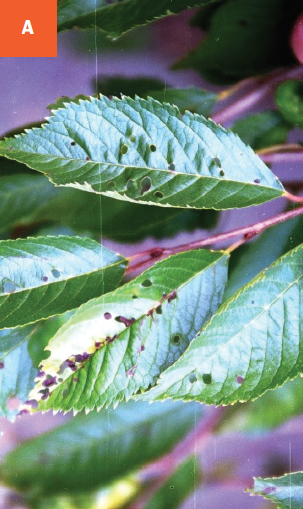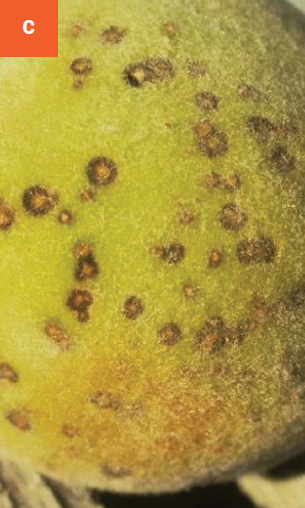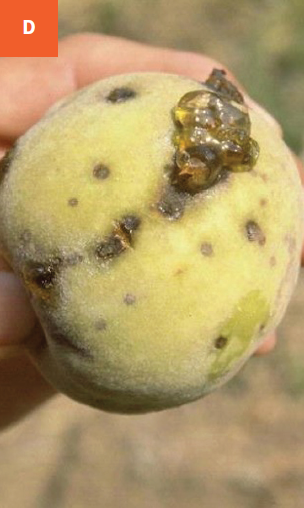Shot Hole Blight or Coryneum Blight
Wilsonomyces carpophilus (fungus)
HOST Stone fruit trees including cherry, apricot, peach, and almond (ornamental)
DAMAGE/SYMPTOMS Leaf infection in spring results in small, round, purplish to brown lesions. The spots may enlarge, and the infected leaf tissue can drop out of the leaf blade, leaving a “shot hole.” Cankers develop after infection and may result in killing of the twig. Infected buds are darker than healthy ones and may show gummosis. Infection of fruits starts as small purple spots which can enlarge to grayish lesions and may show gumming. Severe infection will result in fruit loss.
DISEASE CYCLE The fungus overwinters in canker tissue on twigs and in infected buds. Spores are released during rainy periods in spring and infect new buds. Susceptible tissues can also be infected later in the season if the weather conditions are favorable for the pathogen.
MANAGEMENT Effective control measures include pruning out and destroying of infected branches during the dormant season. Disinfect pruning tools between cuts with 70% ethyl alcohol or a standard household disinfectant spray. Use low-volume sprinklers or drip irrigation to avoid wetting the foliage. In fall after leaf drop, consider applying a fixed copper or chlorothalonil product to protect buds during the dormant season. High value plants can be re-treated in spring before buds start to swell. Strictly follow instructions on the pesticide labels.
A Infected leaf tissue drops out of leaves, leaving “shot holes” behind. B Brown leaf spots and shot holes on leaves following infection. C Shothole disease causes spots on infected fruits. D Spots and gumming on infected fruit.




